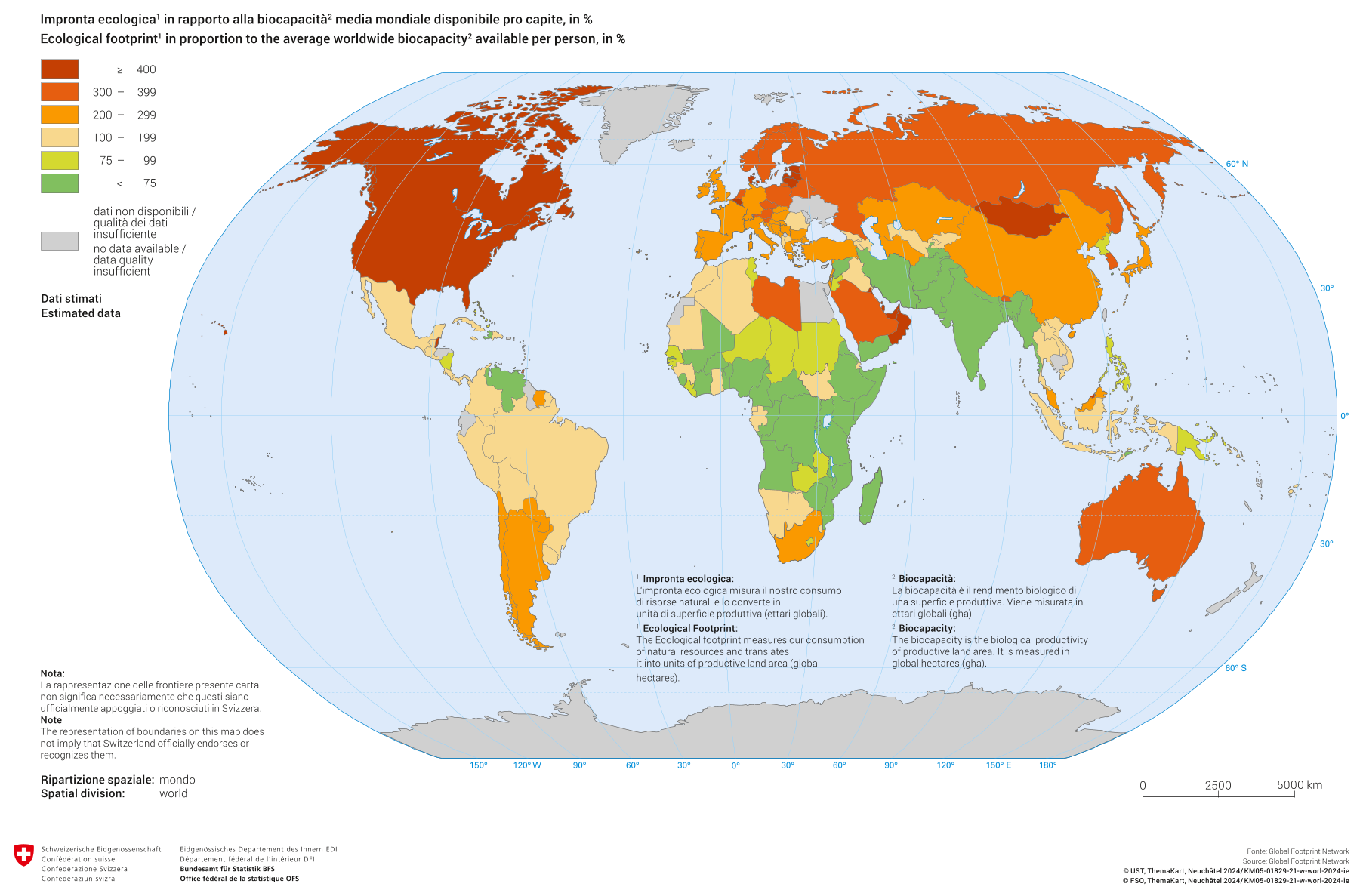What is the ecological footprint?
The ecological footprint indicates how many hectares of forest, pastureland, arable land and sea area are required to renew the resources consumed and absorb the waste products produced. This allows us to compare the impact of our current consumption with the earth's available resources. The consumption behaviour of the world's population is currently causing a deficit in total, which means that humanity would need 1.7 Earths to renew the resources it consumes. However, the footprints of Western European countries are generally above average, the map of the Global Footprint Network provides an overview.
Global distribution of the ecological footprint
The graph on the global distribution of the ecological footprint shows that most industrialised countries consume more than two planets of earth, while the countries of the Indian subcontinent, South East Asia and Africa require less than one planet of earth. As a result, some regions of the world are living at the expense of others.
According to the Swiss Federal Statistical Office, the global per capita footprint already exceeds the available per capita biocapacity by 1.1 gha in 2022.

Earth Overshoot Day also shows us how we deal with our resources. Year after year, more resources are consumed than the planet can provide. Earth Overshoot Day highlights this problem: It indicates the exact date on which the resources available each year will be exhausted. The ecological footprint can be calculated at all levels, whether for selected activities, individual private persons, companies, communities, cities or countries. Unlike the CO₂ footprint, the ecological footprint also takes into account other environmental impacts in addition to CO₂ emissions.
Calculate CO2 footprint
How do we live? What do we eat? How do we get around? Our daily lifestyle has a major impact on our planet. Every day we produce CO2 emissions when driving, heating, cooking, working, partying or flying. Use our footprint calculator to easily determine the amount of CO2 emissions caused by your personal lifestyle.
To the CO2 footprint calculator
With projects of the highest quality, myclimate promotes measurable climate protection and sustainable development worldwide. Since its foundation in 2002, myclimate has developed and supported 197 climate protection projects in 45 countries around the world. There, emissions are reduced by replacing fossil energy sources with renewable energies, implementing local reforestation measures with small farmers and implementing energy-efficient technologies. myclimate carbon offset projects fulfil the highest standards (Gold Standard, Plan Vivo) and, in addition to reducing greenhouse gases, demonstrably make a positive contribution to sustainable development locally and regionally.
Sources:
footprintnetwork.org, Wackernagel/Beyers 2010: Der Ecological Footprint
Switzerland's ecological footprint | Federal Statistical Office (admin.ch)
You can find further exciting information on the subject of climate change and climate protection in our climate booklet
